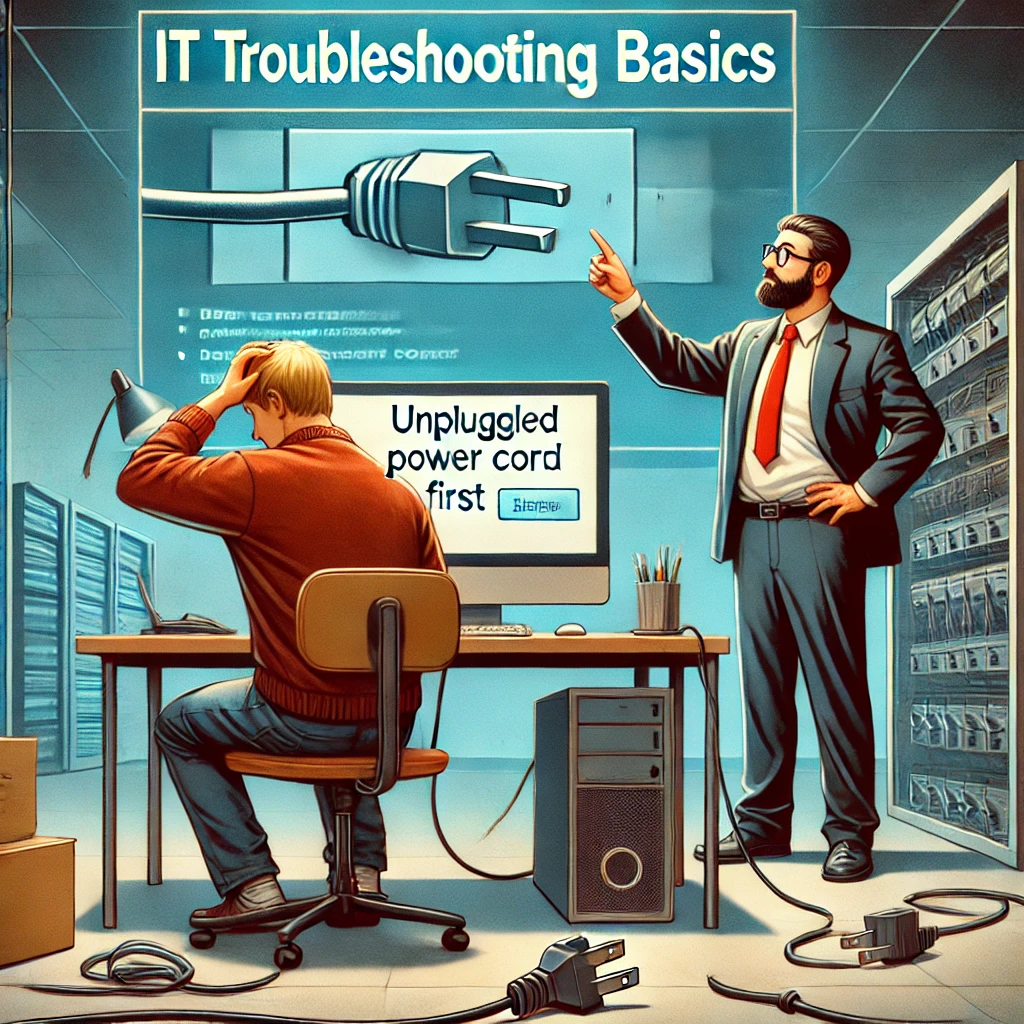Right now, I’m working on an issue where the engineers are making it far more complex than it needs to be. They’re diving deep into advanced diagnostics, throwing complex theories around, and testing edge-case scenarios. But in all of this, they’ve skipped the most fundamental step—going back to basics.
I get it. We all love the thrill of solving a tough problem, flexing our technical muscles, and uncovering some obscure bug that no one else could figure out. But more often than not, the real solution is staring us right in the face, hidden under layers of overcomplication. It’s like when your WiFi isn’t working, and instead of checking if the router is unplugged, you start resetting network configurations and tweaking DNS settings.
This is an oversimplification of the actual issue I am working on, but I wanted to make the point to my fellow engineers. Keep it simple. Most problems are not complex, its people that make them complex.
The Core Tenets of Basic Troubleshooting
- Identify the Actual Problem – Are we diagnosing symptoms, or are we identifying the root cause? Too often, people get distracted by surface-level issues instead of stepping back and understanding the bigger picture.
- Verify the Basics First – Connectivity issues? Check cables. Server down? Verify power and network connectivity. Application errors? Restart the service. It sounds almost too simple, but you’d be surprised how many problems could be solved in minutes if we didn’t skip these basic steps.
- Recreate the Problem – Can it be replicated? If an issue can’t be reproduced, diagnosing it becomes a guessing game. Understanding exactly when and how an issue occurs provides critical insight into what’s causing it.
- Check for Recent Changes – Did a patch get applied? Was there a configuration change? Often, problems stem from something new, so checking for recent modifications can be a huge time-saver.
- Start from a Known Good State – Rolling back to a last known working configuration or testing with a fresh system can reveal whether the issue is system-wide or isolated.
The Cost of Overcomplicating Troubleshooting
Overcomplicating a problem is not just frustrating—it’s expensive. Time gets wasted, productivity drops, and in some cases, systems stay down longer than necessary. The issue I’m currently working on is a perfect example. Multiple engineers have spent hours analyzing logs, debugging complex scripts, and debating architecture flaws. The real problem? A simple misconfiguration that should have been caught in the first five minutes. Could also be miscommunication about the misconfiguration.
It reminds me of a story I heard about a data center outage that lasted for hours. Teams were running diagnostics, calling in specialists, and considering a full system rebuild. The culprit? Someone had accidentally hit the emergency power-off button. A literal push of a button had caused a full-blown crisis. True story. Fortunately, it wasn’t me that day, but I was in a data center one time where the door exit button was next to the emergency shut off. To this day when entering and exiting, I still let someone else hit the button. I mean really… next to the door exit button?
The Bottom Line
Technology evolves, but troubleshooting fundamentals remain the same. The next time you’re faced with an issue, don’t dive headfirst into the deep end. Instead, take a step back, assess the basics, and systematically eliminate simple problems first. More often than not, the simplest answer is the right one.
